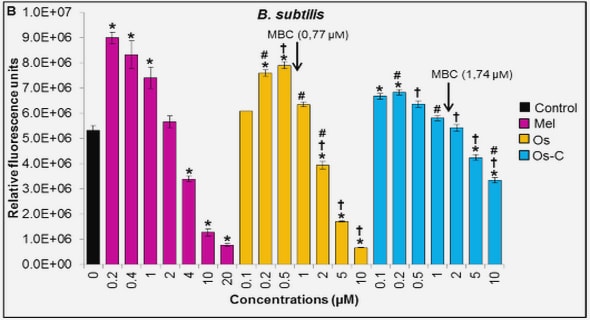(Downloads - 0)
For more info about our services contact : help@bestpfe.com
Table of contents
Introduction
I Context and state of the art
I·A From atoms to semiconductors
I·A·1 Energy bands formation
I·A·2 Doping
I·A·3 Direct and indirect bandgaps
I·A·4 Light absorption and electron-hole pairs generation
I·A·4·a Recombination mechanisms in silicon
I·B From semiconductors to solar cell structures
I·C Overcoming the limitations of silicon with III-V materials
I·D GaP/Si heterojunctions
I·D·1 Advantages of GaP over a-Si:H, and history of GaP/Si devices
I·D·2 Challenges of epitaxy of GaP on silicon
I·E State of the art on GaP/Si solar cells
I·F Objectives and outlines
II Processes and methods
II·A Material processing
II·A·1 Overview of the process flow
II·A·2 Crystalline silicon substrates
II·A·3 Metalorganic chemical vapour epitaxy of gallium phosphide: MOCVD
II·A·4 Plasma-enhanced chemical vapour deposition of hydrogenated amorphous silicon
II·A·5 Physical vapour deposition of Transparent Conductive Oxide (TCO)
II·A·6 Metallization
II·A·6·a Front side: Screen printing
II·A·6·b Back side: Electron beam evaporation
II·A·7 Wafer surface preparation and cleaning
II·A·7·a RCA-HF-O3 clean for storage
II·A·7·b Deoxidation
II·A·7·b·ⅰ Siconi™ etch before MOCVD
II·A·7·b·ⅱ HF deoxidation before PECVD
II·A·7·c Material etching procedures
II·A·7·c·ⅰ GaP etching with HF
II·A·7·c·ⅱ Removing GaP and metals : Aqua regia etching
II·A·7·c·ⅲ Silicon etching with KOH
II·B Characterization techniques
II·B·1 Materials morphology
II·B·1·a Layer thickness: Ellipsometry
II·B·1·b Surface roughness: Atomic Force Microscopy (AFM)
II·B·1·c Layer thickness, crystalline defects: Electron Microscopy
II·B·1·c·ⅰ Scanning Electron Microscopy (SEM)
II·B·1·c·ⅱ Transmission Electron Microscopy (TEM)
II·B·2 Materials composition
II·B·2·a Chemical composition and bonds: X-ray photoelectron spectrometry
II·B·2·b Active dopant concentration: Electrochemical capacity-voltage (ECV)
II·B·2·c Chemical composition: Secondary Ion Mass Spectroscopy: SIMS
II·B·3 Electronic properties
II·B·3·a Bulk resistivity: 4-point probe
II·B·3·b Charge carrier density: Hall Effect
II·B·3·c Carrier effective lifetime
II·B·3·c·ⅰ Quasi steady-state photoconductance: QSSPC
II·B·3·c·ⅱ Microwave photoconductance decay: μWPCD
II·B·3·c·ⅲ Photoluminescence: PL
II·B·3·d Solar cells performances
II·B·3·e Current-density–voltage curve: J–V
II·B·3·e·ⅰ J–V under illumination
II·B·3·e·ⅱ J–V without illumination : Dark-J–V
II·B·3·f Pseudo-J–V curve: Suns-Voc
II·B·3·g Internal and external quantum efficiency: IQE and EQE
II·B·3·h Pseudo-efficiency
II·C Heterojunction solar cells simulation: AFORS-HET
III Minority carrier lifetime degradation during GaP/Si solar cells fabrication
III·A Solar cells measurements
III·B Carrier lifetime degradation origins
III·B·1 Lifetime vs epitaxy steps
III·B·2 Discussion on the origin of minority carrier lifetime degradation
III·C Silicon bulk degradation analysis
III·C·1 Annealing temperature dependency
III·C·2 Reproducibility of degradation
III·C·3 Minority carrier lifetime distribution
III·C·4 Preventing contaminants diffusion
III·C·5 Contaminants detection
III·C·5·a SIMS
III·C·5·b Hall Effect Spectroscopy
III·C·6 Minority carrier lifetime evolution under illumination
III·C·6·a Lifetime vs time monitored by μWPCD
III·C·6·b Iron in boron-doped silicon
III·C·6·c Lifetime vs time measured by QSSPC
III·C·6·d Effect of trap dissociation on IQE
III·C·7 Contaminants quantification
III·C·7·a Iron concentration calculation from carrier lifetimes limited by recombination through iron levels
III·C·7·b Iron concentration estimation through IQE simulation
III·C·7·c Discussion on iron concentration determination
III·D Interface passivation
III·D·1 Determination of Sa-Si:H
III·D·2 Determination of SGaP and Sox
III·D·3 Discussion on the surface recombination velocity
III·E Conclusion on the minority carrier lifetime degradation
IV GaP/Si interface passivation
IV·A Surface reconstruction annealing in non-contaminating chambers
IV·A·1 Annealing in RTP systems
IV·A·2 Annealing in SiGe-MOCVD system
IV·A·3 Surface reconstruction on 4°-offcut wafers
IV·A·4 Conclusion on surface reconstruction annealing in non-contaminating chambers
IV·B GaP/Si template precursors
IV·C Hydrogen implantation for GaP/Si interface passivation
IV·D GaP/Si interface and bulk GaP contaminants
IV·D·1 Effect of air exposure
IV·D·2 Surface vs bulk GaP
IV·E Wetting layers for GaP epitaxy
IV·F Conclusion on the GaP/Si interface passivation
V Solar cells fabrication and results
V·A Solar cells fabrication and performances
V·A·1 Integrating decontamination steps for GaP/Si solar cells
V·A·2 Tested gettering techniques
V·A·2·a Implantation of phosphorus
V·A·2·b Diffusion of phosphorus
V·A·2·b·ⅰ Adapting the process flow
V·A·2·b·ⅱ Lifetime of precursors
V·B Solar cells fabrication and measurement
V·B·1 SiOx diffusion barrier
V·B·1·a Passivation of the solar cells precursors
V·B·1·b J–V and efficiencies
V·B·1·c Internal Quantum Efficiency
V·B·1·d Photoluminescence
V·B·1·e Morphology of the materials after decontamination steps
V·B·1·f Conclusion on the SiOx barrier for gettering
V·B·2 SiOx/SiN diffusion barrier
V·B·2·a J–V and efficiencies
V·B·2·b Internal Quantum Efficiency
V·B·2·c Photoluminescence
V·B·2·d Morphology of the materials before and after gettering
V·B·2·e SIMS analysis of the solar cells
V·B·3 GaP on unannealed silicon and GaP as window layer
V·B·3·a J–V and efficiencies
V·B·3·b Photoluminescence
V·C Conclusion on the solar cells fabrication and their performances
Conclusion and perspectives




